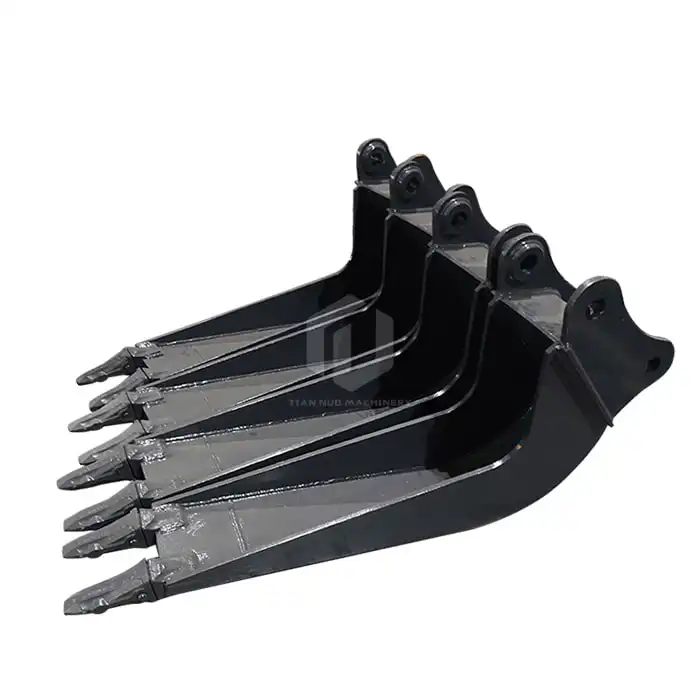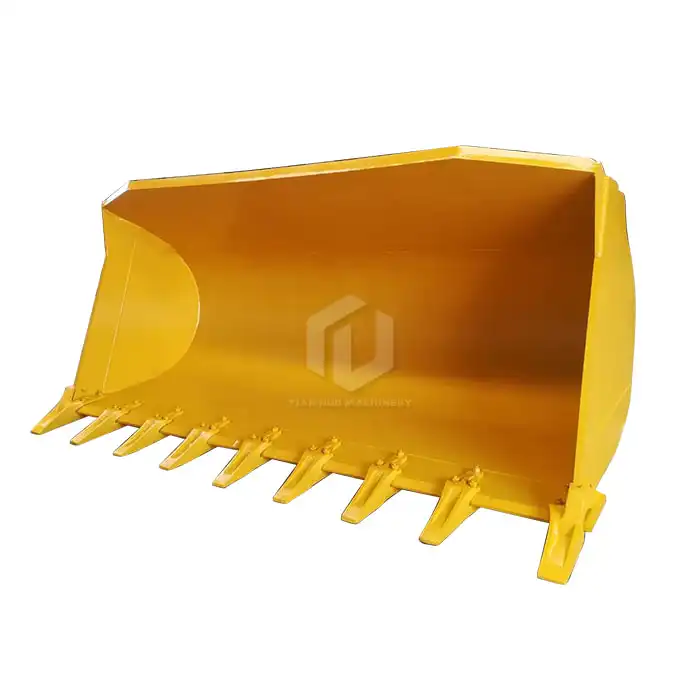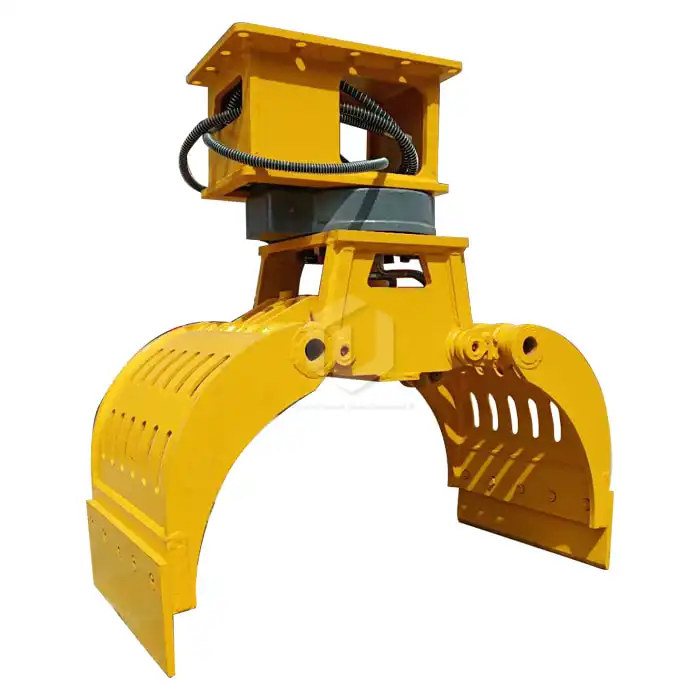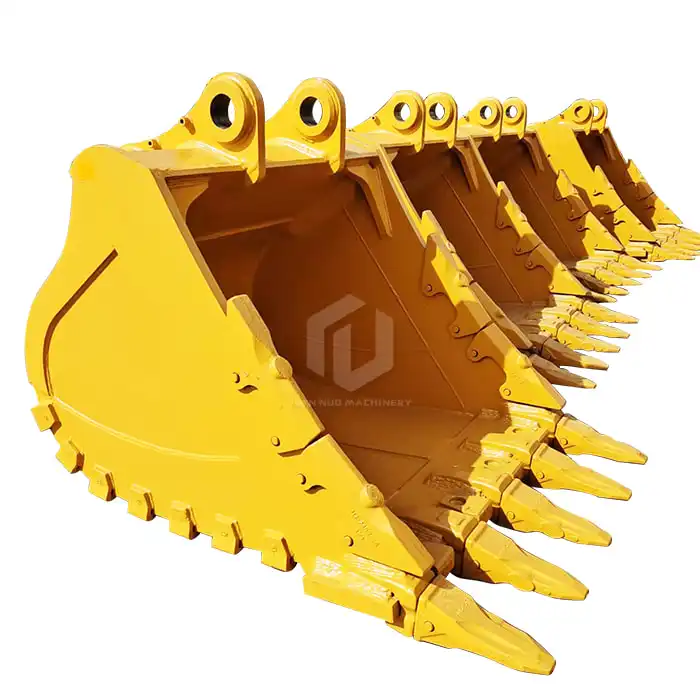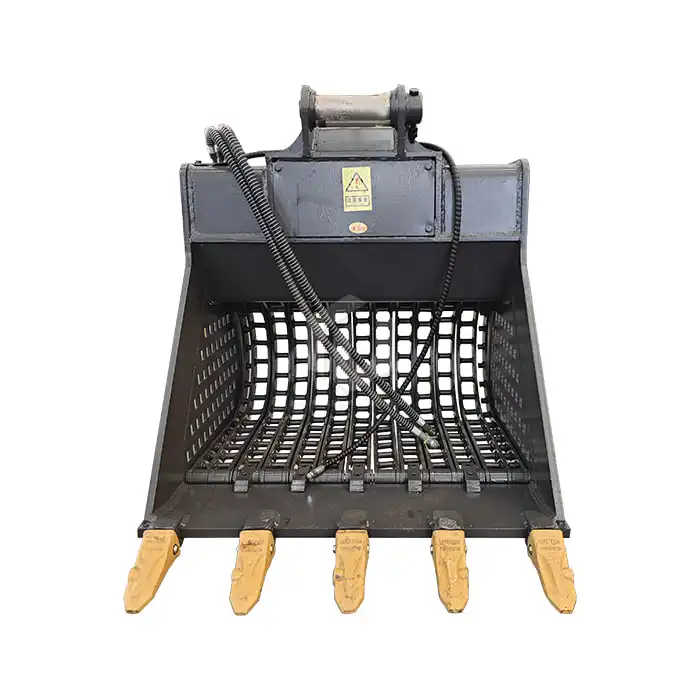What is the reach of a excavator extension arm?
Excavators are versatile machines widely used in construction, mining, and landscaping projects. One of the key components that enhance their versatility is the excavator extension arm. This crucial attachment allows operators to extend the reach of their excavators, enabling them to work in areas that would otherwise be inaccessible. In this comprehensive guide, we'll explore the concept of reach in relation to excavator extension arms, how it's calculated, and the factors that influence it.

What does "reach" mean for an excavator extension arm?
When we talk about the "reach" of an excavator extension arm, we're referring to the maximum distance the excavator can extend its arm while still maintaining stability and operational effectiveness. This measurement is crucial for determining the excavator's working range and its ability to access hard-to-reach areas on a job site.
Its reach is typically measured from the center of the excavator's swing circle to the tip of the bucket when the arm is fully extended. This measurement gives operators and project managers a clear understanding of the machine's capabilities and limitations.
Understanding the reach of an excavator extension arm is essential for several reasons:
- Project Planning: Knowing the reach helps in planning excavation and material handling tasks more efficiently.
- Safety: It ensures that operators can work within safe limits, preventing potential accidents or machine instability.
- Productivity: A longer reach can increase productivity by reducing the need for frequent repositioning of the excavator.
- Cost-effectiveness: Proper utilization of the excavator's reach can lead to more efficient use of resources and time.
The concept of reach is not just about the length of the arm, but also about the excavator's ability to maintain stability and power throughout its extended range. This balance between reach and stability is a crucial factor in the design and engineering of excavator extension arms.
How is the reach of an excavator extension arm calculated?
Calculating the reach of an excavator extension arm involves several factors and measurements. While the exact method may vary slightly between manufacturers, the general approach remains consistent. Here's a breakdown of how the reach is typically calculated:
- Base Measurement: Start with the length of the excavator's standard arm from the stick pivot pin to the bucket pivot pin.
- Extension Length: Add the length of the extension arm attachment.
- Boom Consideration: Factor in the length and angle of the boom, which affects the overall reach.
- Bucket Length: Include the length of the bucket from its pivot pin to the tip.
- Swing Center: Measure from the center of the excavator's swing circle.
The total reach is then calculated by combining these measurements, taking into account the geometry of the fully extended arm. It's important to note that the maximum reach is typically achieved when the arm is positioned at a specific angle, usually around 45 degrees from horizontal.
Manufacturers often use sophisticated computer-aided design (CAD) software to model and calculate the reach more precisely. These models take into account various factors such as the weight distribution of the extended arm, hydraulic capabilities, and the excavator's stability limits.
It's worth noting that the calculated reach is often presented in two forms:
- Maximum Reach: The furthest distance the bucket can extend, typically measured at ground level.
- Working Reach: The practical operating range, which may be slightly less than the maximum reach to ensure stability and effectiveness.
Understanding these calculations helps operators and project managers to make informed decisions about which excavator and extension arm combination is best suited for their specific project requirements.
What factors influence the reach of an excavator extension arm?
The reach of an excavator extension arm is influenced by a variety of factors, each playing a crucial role in determining the machine's overall capabilities. Understanding these factors is essential for both manufacturers in designing effective extension arms and for operators in maximizing their use. Let's explore the key elements that impact reach:
- Base Excavator Size and Weight:
The size and weight of the base excavator are fundamental factors in determining the potential reach of an extension arm. Larger, heavier excavators generally have the capacity to support longer extension arms without compromising stability. This is due to their increased counterweight and broader base, which provide a more stable platform for extended operations.
- Hydraulic System Capacity:
The hydraulic system of the excavator plays a crucial role in powering the extension arm. A more powerful hydraulic system can support longer arms and maintain efficiency at greater distances. The pressure and flow rate of the hydraulic fluid directly impact the arm's ability to operate effectively at its maximum reach.
- Material and Design of the Extension Arm:
The materials used in constructing the extension arm, along with its design, significantly influence its reach capabilities. High-strength, lightweight materials like certain alloys can allow for longer arms without adding excessive weight. The design of the arm, including its cross-section and reinforcement points, affects its strength and stability at extended lengths.
- Counterweight Configuration:
The counterweight on an excavator balances the weight of the extended arm and its load. Proper counterweight configuration is essential for maintaining stability at maximum reach. Some advanced systems allow for adjustable or additional counterweights to be added when using longer extension arms.
- Boom Design and Length:
The design and length of the excavator's boom interact with the extension arm to determine overall reach. A well-designed boom complements the extension arm, allowing for greater reach while maintaining stability and maneuverability.
- Operational Conditions:
Environmental factors such as ground conditions, slope, and wind can affect the practical reach of an extension arm. Operators must consider these conditions to ensure safe and effective operation at maximum reach.
- Load Capacity:
The weight of the materials being handled affects the effective reach. Heavier loads may require the arm to be used at a shorter extension to maintain stability and lifting capacity.
- Technological Advancements:
Modern excavators often incorporate advanced technologies such as computer-controlled hydraulics and stability systems. These can optimize the use of extension arms, potentially increasing safe working reach.
- Regulatory Compliance:
Safety regulations and industry standards can influence the design and permissible reach of extension arms. Manufacturers must balance maximum reach with compliance to these standards.
- Operator Skill and Experience:
While not a physical factor of the machine itself, the skill and experience of the operator can significantly impact the effective use of an excavator's maximum reach. Skilled operators can work more confidently and efficiently at extended reaches.
These factors interplay in complex ways, and manufacturers must carefully balance them to create extension arms that offer maximum reach while ensuring safety, stability, and operational efficiency. For operators and project managers, understanding these factors helps in selecting the right equipment for specific tasks and in utilizing the full potential of their excavators.
As technology continues to advance, we can expect to see further improvements in excavator extension arm capabilities. Innovations in materials science, hydraulic systems, and computer-aided control systems are likely to push the boundaries of what's possible in terms of reach and efficiency.
Excavator Extension Arm For Sale
At Tiannuo Machinery, we offer a range of high-quality excavator extension arms designed to meet diverse project needs:
- Extends to 16 meters for 20-25 ton excavator.
- Extends to 20 meters for 25-34 ton excavator.
- Extends to 22 meters for 35-40 ton excavator.
- Extends to 26 meters for 40-50 ton excavator.
For detailed information or inquiries about our excavator extension arms, please reach out to our management team at arm@stnd-machinery.com, or connect with our dedicated team members at rich@stnd-machinery.com and tn@stnd-machinery.com. At Tiannuo Machinery, we are committed to delivering excellence in railway maintenance solutions and providing the right tools to enhance your excavation capabilities.
References
- Construction Equipment Guide. (2021). "Understanding Excavator Reach and Dig Depth."
- Journal of Construction Engineering. (2020). "Factors Affecting Excavator Performance and Efficiency."
- Heavy Equipment Forums. (2022). "Calculating Excavator Arm Reach - Best Practices."
- International Journal of Engineering Research. (2019). "Advancements in Excavator Arm Design and Materials."
- Safety and Health Magazine. (2021). "Excavator Safety: Understanding Equipment Limitations."

